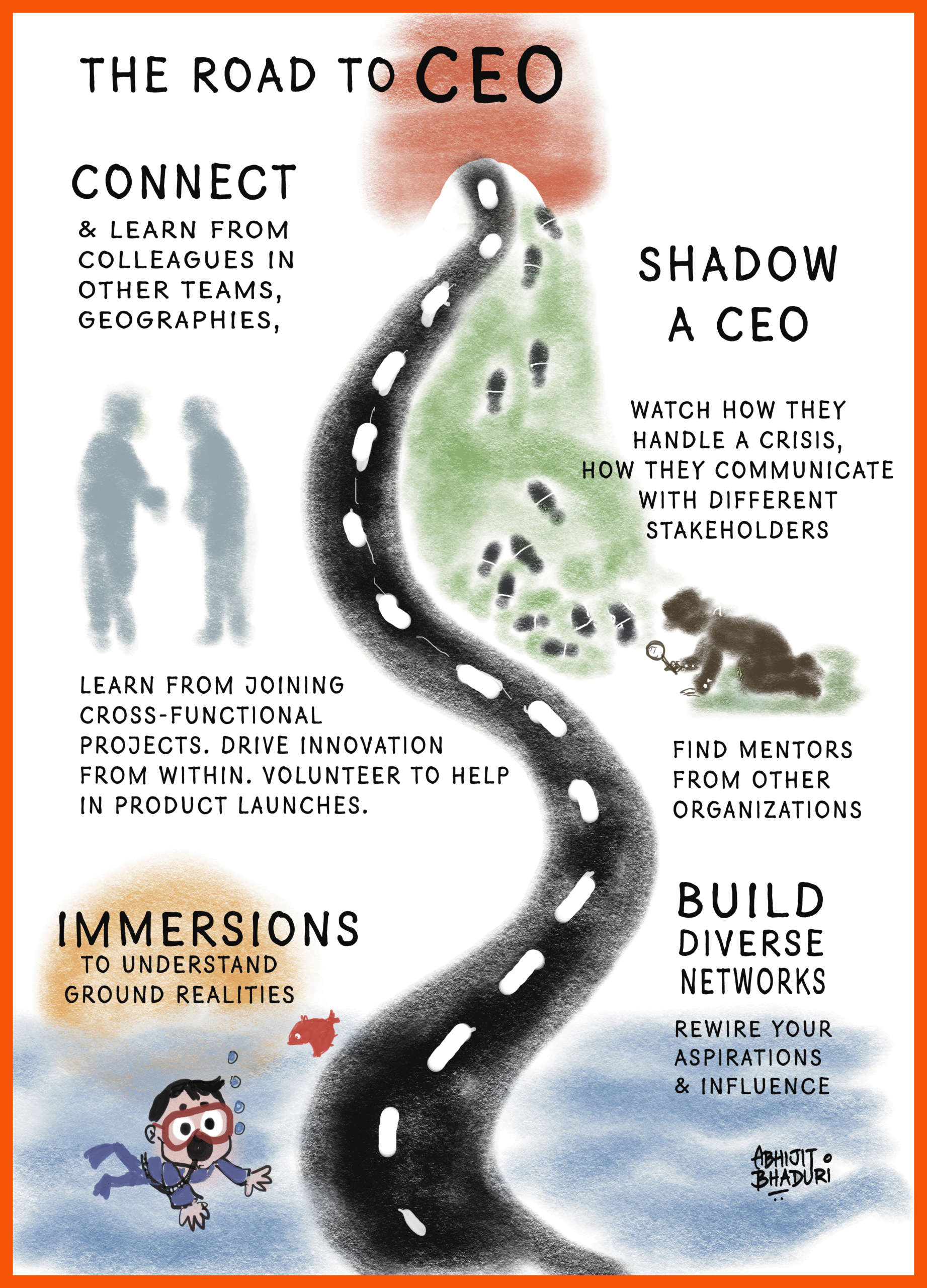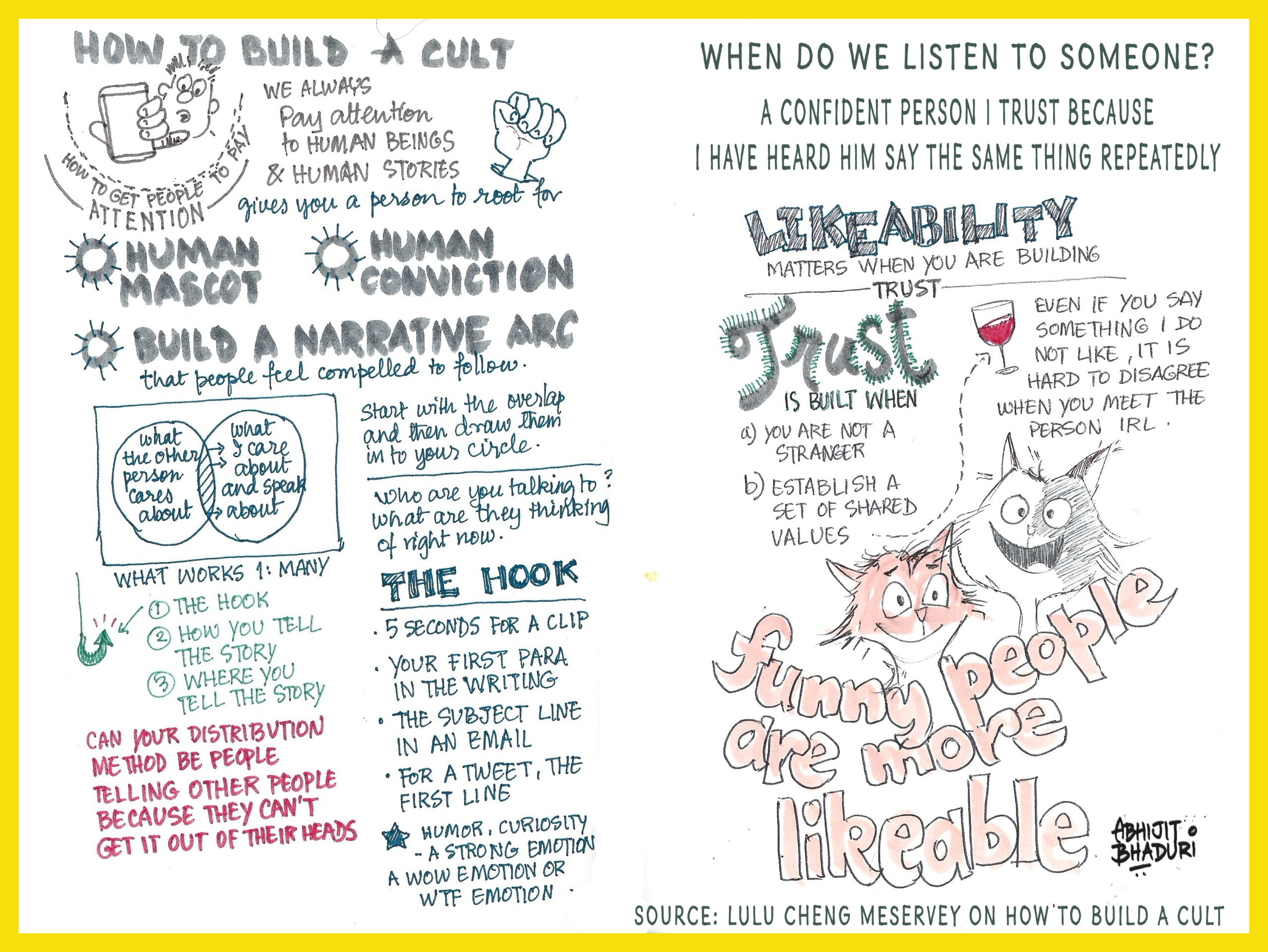Everyone wants to climb the ladder—but what if the real path to CEO is sideways, immersive, and often invisible on a resume?

In a world that’s changing faster than most org charts can keep up with, the journey to the CEO seat looks less like a straight corporate climb—and more like a winding, immersive path.
That’s the idea behind this visual: a roadmap to CEO that doesn’t rely on title inflation, but on intentional, unconventional leadership development.
I’ve used it in coaching finance leaders—especially CFOs—who are increasingly being tapped for CEO roles. But the insight applies to any function. Because the skills that define future-ready CEOs aren’t built in strategy rooms alone. They’re forged in frontline immersion, diverse networks, and lateral curiosity.
Why CFOs Are a Case Study in CEO Potential
More CFOs are being considered for CEO roles today than ever before—and for good reason. They bring rigor, risk discipline, and a deep understanding of how value is created. But even the most strategic CFOs face three key shifts when preparing for the CEO chair:
From inward focus to outward sensing: Finance leaders are brilliant at managing internal complexity. But CEOs must look outward—toward customers, markets, competitors, regulators, and culture.
From cost discipline to innovation thinking: Many CFOs excel at optimizing the business. CEOs need to imagine entirely new businesses. CFOs often work with high-performing specialists. CEOs must inspire a workforce with diverse motivations, experiences, and worldviews. In moving from CFO to CEO, they go from leading a team to leading an organization.
These shifts aren’t just relevant to CFOs. They mirror the gap all senior leaders must cross when stepping into enterprise leadership.
Five detours that you must take
Business Today asked me to explain this work trend. What was driving more Boards to place their bet on the CFO when the CEOs job came up as a vacancy. What could be way to fast track the road to the CEO’s chair?
Here’s what I’ve observed in leaders who grow beyond their function to become system thinkers:
1. Immersions:
Go where your metrics don’t take you. If you only do what gets measured, then you are missing the chance to build your skills for the C-Suite. Spend time in customer service, sales, or the factory floor. Experience the work as it’s lived. It rewires your instincts. It gives you a close view of the ground reality. I learned more from speaking to the sales team and listening to their conversations with customers than what any book on management can teach.
2. Cross-Functional Projects:
Volunteer for initiatives outside your lane—product launches, ESG programs, digital transformations. These teach you to lead through ambiguity and navigate without authority. This also builds a deeper understanding of your own function because you can now look at it from the outsider’s eyes.
3. Shadow a CEO:
Not just to watch decisions—but to observe how they handle complexity, how they communicate in crises, and how they hold the trust of multiple stakeholders.
I spoke to Shiv Shivakumar, ex-Chairman of PepsiCo in India. He spoke about the power of reframing. Listen in
Shiv Shivakumar wrote a book called The CEO Mindset. You may find it interesting.
4. Build Diverse Networks:
Talk to people who think differently—designers, marketers, engineers, social activists. Talking to people from different cohorts can be illuminating. Get a 25-year-old to teach you TikTok. Ask them how they get career advice or ideas on fashion. Social Media plays a bigger role than what you can ever imagine. Influence doesn’t look like it used to. It comes from listening.
5. Connect Across Boundaries:
Geographies. Business units. Cultures. Learn from peers in other teams and countries. Innovation often hides at the intersections. Prof Bill Fischer, in his book The Idea Hunter uses an acrononym I-D-E-A to describe people who were great idea hunters. You gotta be Interested and curious; you have to have a Diverse set of sources; you have to do it Every day, it’s not something you can just do episodically or periodically; and you need to be Agile.
“… great leaders are great idea hunters. They bring ideas into an organization. They bring ideas into a team. They move things forward through the power of ideas, not through their intellect or their genius. It was really about their ability to go around the world and find ideas, repurpose those ideas, and create something brand-new.”
What’s the Common Thread?
All five of these practices expose you to what the spreadsheet can’t tell you: how people think, how markets move, how culture shapes behavior.
If you’re a CFO, this is how you build the bridge from financial strategy to enterprise leadership.
If you’re in HR, marketing, or operations—it’s how you build relevance beyond your silo.
If you’re already in the C-suite, it’s how you build successors with the range required for 21st-century leadership.
Closing Thought
The CEOs of the future won’t be defined by their title history—but by the depth of their curiosity, the diversity of their exposure, and the empathy they’ve earned in the trenches.
The road to CEO isn’t a race. It’s a series of rewired assumptions, immersive learning moments, and strategic pivots. And maybe the best way to prepare isn’t to climb faster—but to step sideways, look outward, and listen deeper.
Which of these steps could fast track you towards your next role?




Leave a Reply